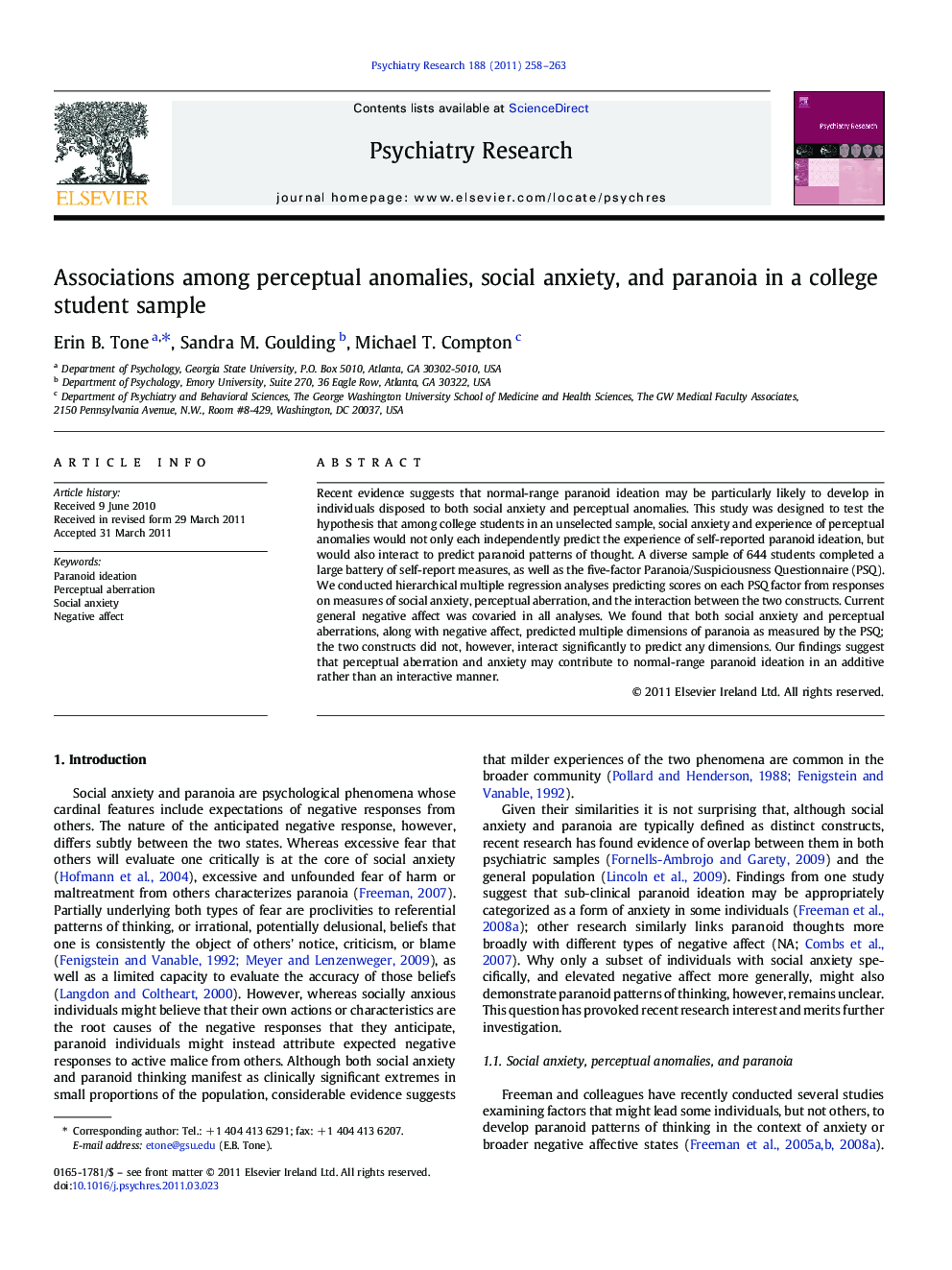| Article ID | Journal | Published Year | Pages | File Type |
|---|---|---|---|---|
| 333788 | Psychiatry Research | 2011 | 6 Pages |
Recent evidence suggests that normal-range paranoid ideation may be particularly likely to develop in individuals disposed to both social anxiety and perceptual anomalies. This study was designed to test the hypothesis that among college students in an unselected sample, social anxiety and experience of perceptual anomalies would not only each independently predict the experience of self-reported paranoid ideation, but would also interact to predict paranoid patterns of thought. A diverse sample of 644 students completed a large battery of self-report measures, as well as the five-factor Paranoia/Suspiciousness Questionnaire (PSQ). We conducted hierarchical multiple regression analyses predicting scores on each PSQ factor from responses on measures of social anxiety, perceptual aberration, and the interaction between the two constructs. Current general negative affect was covaried in all analyses. We found that both social anxiety and perceptual aberrations, along with negative affect, predicted multiple dimensions of paranoia as measured by the PSQ; the two constructs did not, however, interact significantly to predict any dimensions. Our findings suggest that perceptual aberration and anxiety may contribute to normal-range paranoid ideation in an additive rather than an interactive manner.
